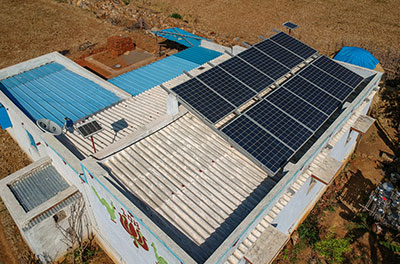Principles of Global SDG7 Hubs Approach
Local Ownership
Cross-Sectoral Partnerships
Implementation Based

The energy - health thematic nexus focuses on implementation and knowledge partnership programs with local partners in designing & deployment of last mile health solutions, sustainable delivery models, efficient technology and built environment solutions. 111

The livelihood sector nexus involves engaging local partners to drive implementation, knowledge partnership programs that enhance farm and off farm productivity, technology efficiency and financial models, thus creating assets and providing safety nets for the poor.

Developing strong enabling ecosystems for local enterprises is critical towards building local ownership to design and deploy sustainable energy driven solutions. By building a supporting environment for local energy SMEs that would stimulate local economies as well as customizes the solutions for the end user needs.

This thematic nexus is aimed at building models around decentralised sustainable energy solutions that not only catalyze the delivery of fundamental needs (health, education, basic community services) of displaced communities but also create alternate pathways to empower livelihood micro-enterprises in these vulnerable settings.

In the ecosystem approach, I like the idea of how the programs are done in a synchronized way
because you cannot do one without the other.
Francis Rwebogora, Fraxen Consult, Tanzania
Need assessments to design and match appropriate and efficient technical, financial and ownership model.
Financial access to ensure affordability and investments in long term energy assets and not short term consumptive products.
Human Resources to articulate and solve local problems, deliver solutions and ensure maintenance and performance of energy assets.
Policy to support practitioners, and develop responses to ground realities and allow for strong end user feedback loops.
Local entities(non-profit organizations, enterprises, last mile integrators) who innovate and customise the delivery of solutions based on end user needs.
need assessments to design and match appropriate and efficiant technical, financial and ownership model
The inclusive ecosystem approach aims to use sustainable energy access to create local systems that innovate, develop, disseminate and sustain solutions over a period of time.
This approach would need to specifically target and strengthen five aspects which determine the accessibility of a solution to the end user.